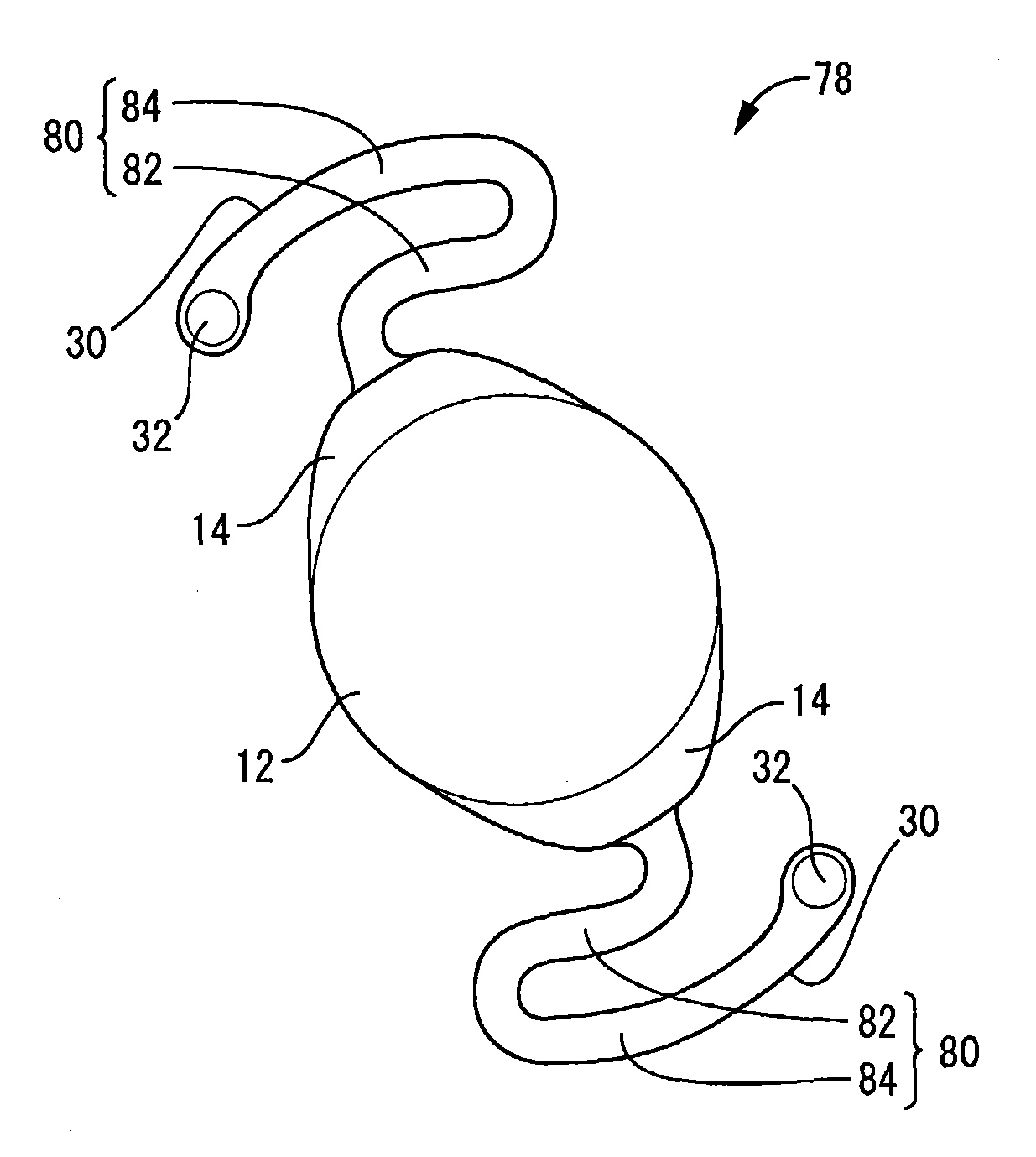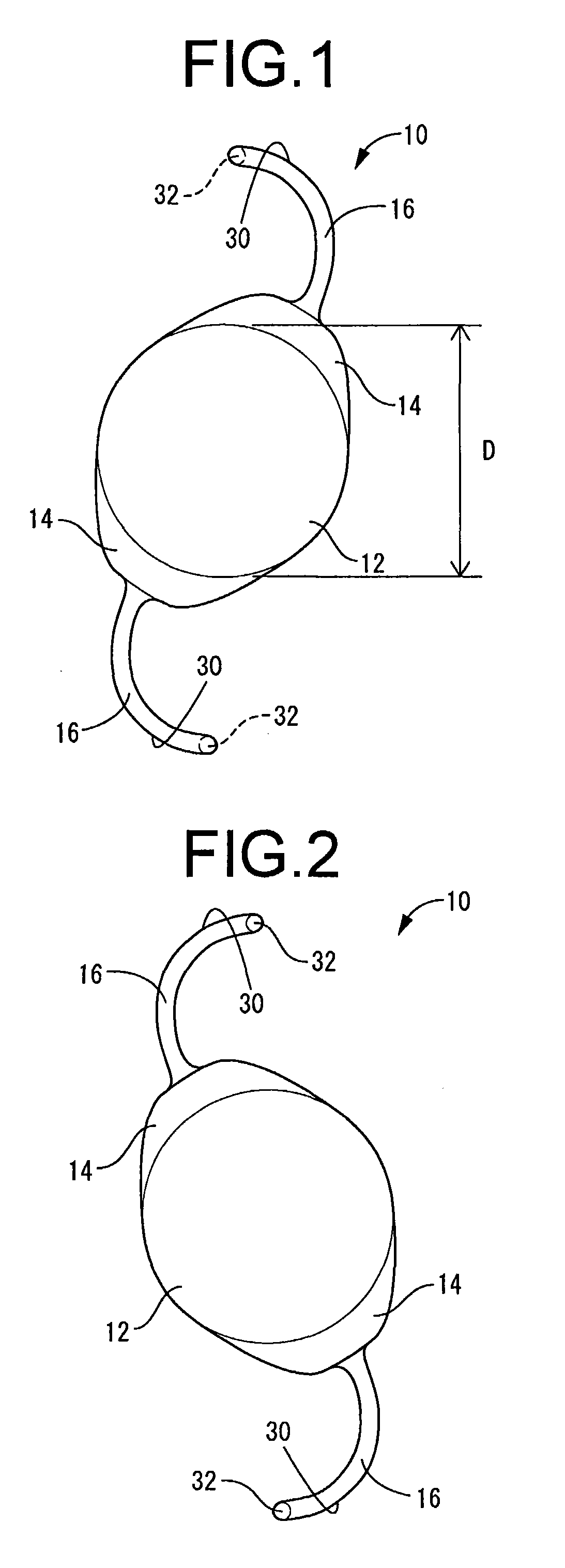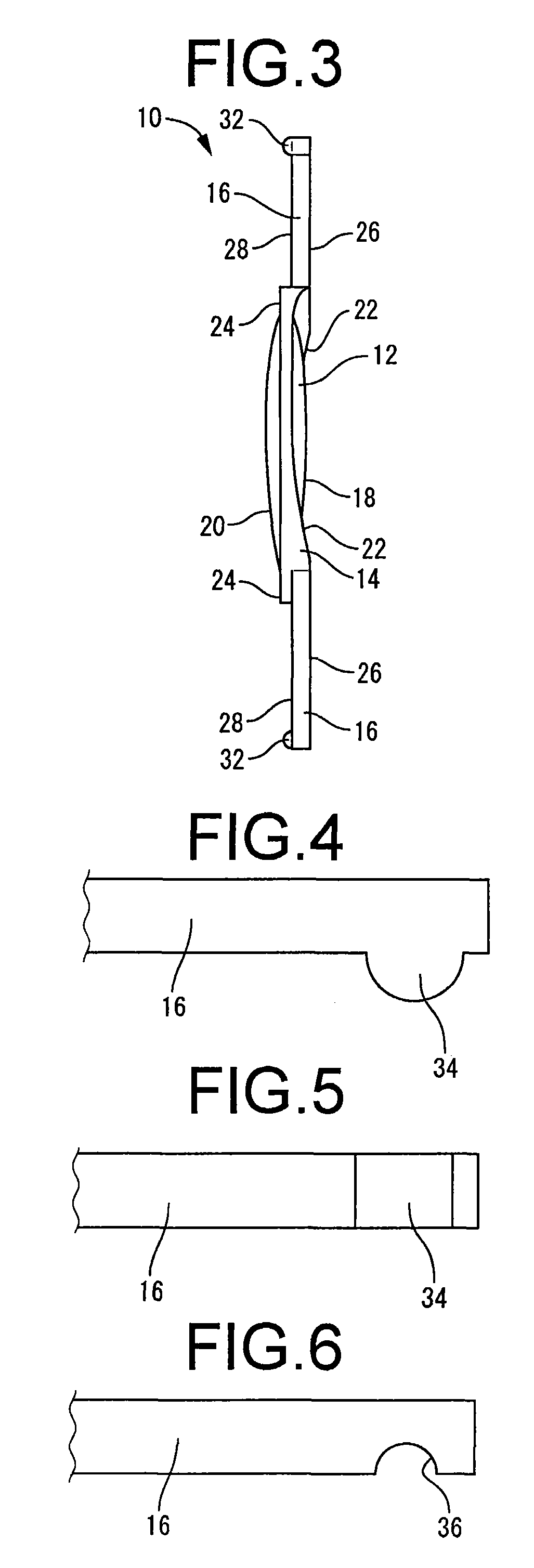Intraocular lens
a technology of intraocular lens and lens plate, which is applied in the field of intraocular lens, can solve the problems of affecting the quality of intraocular lens, and unable to overcome adhesion with recovery force sufficient, so as to prevent strong adhesion, easy and stable position and support, and easy and stable positioning
- Summary
- Abstract
- Description
- Claims
- Application Information
AI Technical Summary
Benefits of technology
Problems solved by technology
Method used
Image
Examples
first embodiment
[0085]First, FIGS. 1 through 3 depict an intraocular lens 10 of foldable type, pertaining to the present invention. This intraocular lens 10 includes an optical portion 12, a pair of coupling portions 14, 14, and a pair of supporting portions 16, 16.
[0086]This intraocular lens 10 having the optical portion 12, the coupling portions 14, 14, and the supporting portions 16, 16 may be formed of any of various materials endowed with visible light transmissivity sufficient to give an intraocular lens of foldable type, and endowed with excellent softness and certain amount of elasticity. In preferred practice, the soft material will have glass transition temperature of 30° C. or higher and refractive index of 1.51 or lower. Such soft materials enable the intraocular lens 10 to be easily folded or rolled up at normal temperature, so as to make it more compact as well as further facilitating insertion into the eye during the implantation process. In the present embodiment in particular, an a...
second embodiment
[0132]FIGS. 4 and 5 depict the relevant portion of an intraocular lens pertaining to the present invention. In the intraocular lens pertaining to the present embodiment, a single rib part 34 is formed as a viscosity reducing portion, on the supporting portion posterior surface 28 of the pair of supporting portions 16, 16. This rib part 34 extends continuously with a generally unchanging semicircular cross section in the width direction of the supporting portions 16, 16, and is constituted so as to have a bowing surface which is convex towards the side to which the rib part 34 projects.
[0133]The intraocular lens of structure according to the present embodiment affords effects similar to those of the first embodiment in that it effectively prevents adhesion of the supporting portions 16, 16 to the optical portion 12, and enables consistent recovery of the supporting portions 16, 16 to their original shape after insertion into the eye. Moreover, in the present embodiment in particular,...
third embodiment
[0134]FIGS. 6 and 7 depict the relevant portion of an intraocular lens pertaining to the present invention. Specifically, in the intraocular lens pertaining to the present embodiment, a single recess 36 that opens onto the posterior face side of the supporting portions 16, 16 is formed by way of a viscosity reducing portion. The recess 36 is formed so as to extend through the projecting distal end portion of the supporting portions16, 16, with generally unchanging semicircular cross section in the width direction of the supporting portions 16, 16 and with the widthwise ends of the recess opening onto the widthwise side edges of the supporting portions 16, 16.
[0135]The intraocular lens of structure according to the present embodiment affords reduced contact area of the projecting distal end portions of the supporting portions 16, 16, which have the problem of being particularly prone to adhesion, vis-à-vis other areas (the optical surface of the optical portion 12 and so on), and can...
PUM
 Login to View More
Login to View More Abstract
Description
Claims
Application Information
 Login to View More
Login to View More - R&D
- Intellectual Property
- Life Sciences
- Materials
- Tech Scout
- Unparalleled Data Quality
- Higher Quality Content
- 60% Fewer Hallucinations
Browse by: Latest US Patents, China's latest patents, Technical Efficacy Thesaurus, Application Domain, Technology Topic, Popular Technical Reports.
© 2025 PatSnap. All rights reserved.Legal|Privacy policy|Modern Slavery Act Transparency Statement|Sitemap|About US| Contact US: help@patsnap.com



